Leon Schulman Gaspard - The School of Yehuda Pen - Post No. 8
The Long and Winding Road - The Paper Bridge
This is a continuation of the seven posts about Yudel Pen’s art school and his students (you will find them in the “art” tab of the web page).
Elena Ivanova, “Leon Schulman Gaspard: The Real Story”, 2023. Most of the facts in this post are from the book.
Leon Schulman Gaspard, AKA Leibel Shulman, AKA Leon Schulmann, AKA Leon Gaspard or Gaspar AKA Шульман Лейба Шмуйлович, AKA Шульман Лев Максимович, is the subject of this post. In addition to his names, he changed his birthday, nationalities, stories of his life, even religion.
Leibel Schulman was born in 1883 or 1882 in the town of Ulla (we are already know about Ulla as the town of the Alter Rebbe’s mizinek Moshe). Some say he was from Vitebsk (maybe in the sense that Ulla was a suburb of Vitebsk). But when he reported to a Russian army office, he listed his address in Vitebsk as Yudel Pen’s home studio. Pen was very close to Leibel and his family. Another student of Pen, named Yavich, called Leibel Schulman “an all-time favorite” of Pen.
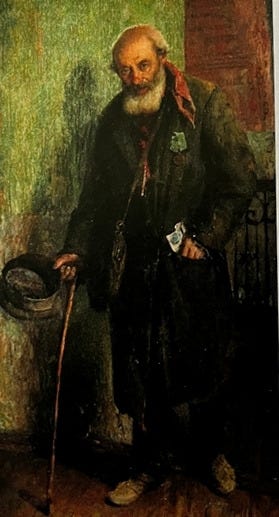
Leibel Schulman’s father was Shmuel Schulman. His mother listed everywhere as Cira. So I am thinking what is “Cira”? And then, of course, it’s “Shira” with a litvisher shin.
Could this be Leibel’s mother, Shira? Look similar to the sketch below.

Developing the Craft
Leible Shulman was one of the first Pen’s students in Vitebsk, he joined the new art studio in 1898 when he was 15–16 yo.
After “graduating” from Pen’s studio, Shulman went to Odessa Art School, where he studied from 1889 or 1900 to 1904.
In 1905, Leon Shulman arrived to Paris and, after a short stint at Academie Julian, he began his exhibition in 1906.
Leibel, typically, made up all kinds of stories about himself and Chagall. He claimed that he was interested in Chagall’s future wife, Bella Rosenfeld, although when he was in Vitebsk she was just a baby. Leible was a realistic artist, a gifted draftsman, influenced by the French impressionism. Chagall has chosen a different path. When in Paris, Chagall wrote: “Shulman stopped by. He has aged, no longer the happy fellow we used to know in Vitebsk. A bit of a philistine [плебей? plebeian?]”
Evlyn Gaspar
In Paris, Leon met an excentric American woman, hatmaker Evlyn Gaspar. Her father was a wealthy Yankee, her mother was a German immigrant to America named Adelmann. Leon married Evlyn in 1908 and started signing his paintings with the name Gaspar and then added a “d” as in Gaspard, to sound more French. Evlyn Gaspar was Episcopalian. So Leon created a story that his father was a Russified French Protestant named Gaspard. Evlyn played along with the rebranding, even adopted her mother’s maiden name, Adel or Adelmann so everyone should think her name Gaspard was only through marriage… Oy, Leibele…
The couple often traveled back to Russia to exhibit, sell paintings and meet friends and family. Three years after the civil marriage in 1913, they went to Vitebsk, where both converted to Russian Orthodoxy and married in Ilyinskya Church. This wasn’t a secret. The event attended by all the prominent officials in Vitebsk. I wonder what his benefactor, the Vitebsker gvir, beer mogul Levinson, who on recommendation of Yudel Pen, financed Shulman’s study in Paris, thought of this eventuality. After the conversion, Leon was given a Russian name Лев Максимович. Added to the impressive name tags collection. So much for being from Ulla…
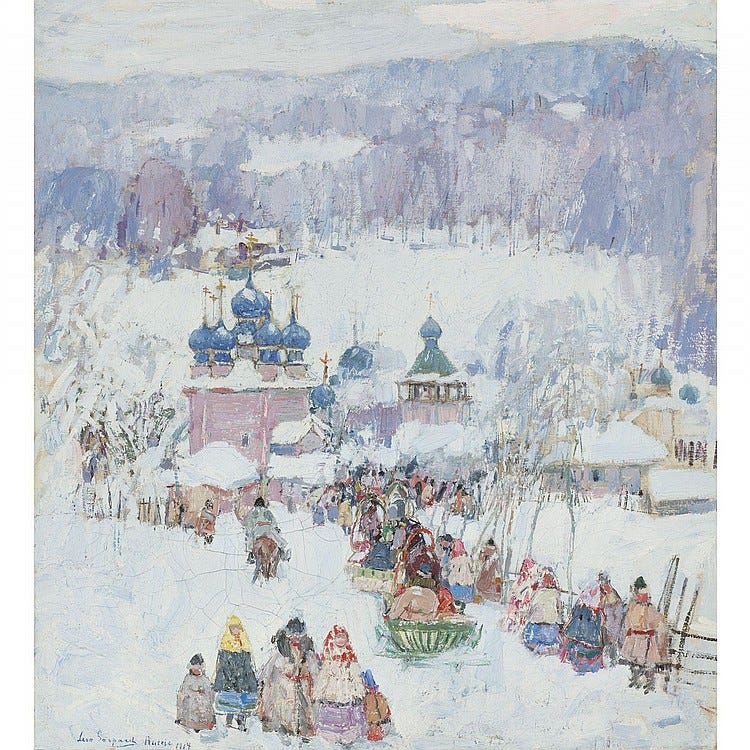
This was a total dream, as Leon remarked how drab Russia looked during his trips back there.
In 1914, during WWI, Leon enlisted in the French army, served in a balloon unit. Wounded and hospitalized in 1915. Evlyn had enough of the European adventures, and she decided to go back to America. Interestingly, the American citizenship was lost when a woman married a forefinger, and she was expected to have the same citizenship as her husband. So Evlyn and Leon had to travel with the regular immigrants through Ellis Island. Even though she declared that she was going to stay with her mother in New Jersey…
If Leon had painted this Chaynik only, it would have been enough.
America
In 1918, after stops in NJ and Chicago, Leon and Evlyn moved to New Mexico, first to Santa Fe and then to the Taos Art Colony, where Leon lived for the rest of his life. Leon exhibited widely and always made money from his art. Evlyn grew disappointed that she sacrificed her talents and life for a crypto Jew.
In 1956, Evlyn died and Leon married Dora Kaminsky, also from Russia.
On February 21, 1964, Leibel Schulman died in Taos from a hearth attack. He was about 82 yo.
Portraits of the Jews
Everyone who lived with the Jews (in the dying Jewish community), knows this exact type. The heart of a kiddush. When no kiddush, still the heart.
An example of the type. This is Konstantin Simun, a sculptor here in Boston. The last time I saw him in a store and took this picture was in 2017 (I thought it was only 5 years ago, years of Covid simply vanished). Konstantin Simun grew up in Nevel. Often I have the feeing that I know more about Konstantin, others, than they know about themselves. Konstantin Simun looks a bit like Reb Yoel.
I am not even sure this is a portrait of a Jew. It could be a Siberian type. The recurring snow in the background. But what a great portrait.
Leon Schulman Gaspard frequently added a contrasting blue glasses or blue eyes. It was his signature shtick. I read he had blued eyes himself. Typical snow in the background, an image of White Russia or fictional Siberia. Frequently a contrasting complimentary red and bold green nearby. He had a remarkable feel for the color.
Can we bring back the kasket, I would wear it with pride.
Typically with rapid, sketch-like strokes.
Traveling Musicians and Siberia
There are a lot of those. Groups of people, who “travel” with instruments, sometimes look like caricatures of Jews. I would say this veers into commercial production kitch.
Maybe a man davening next to a goat on the left, Yom Kippur? Bloody blue glasses and eyes everywhere again, plus the ubiquitous white snow.
And another big theme. Multi-figure paintings of imaginary Siberia with ethnic costumes. One thing Shulman had was a certain panache. Beautiful forest.
People always on a move.
There are multiple bridges and passageways, a recurring theme.
Leibel Schulman all his life carried a folded poem next to his heart. The poem by Odessa Yiddish poet Shimen Frug, “The Paper Bridge”. It was based on a folk tale. I couldn’t find the poem, but here is the origin of the folk tale:
“In 1939, Abraham Meir Habermann published an article in the journal "Jerusalem" entitled "The Origins of 'The Paper Bridge and the Iron Bridge'". In this article, Habermann discusses the origins of a Jewish folktale about two bridges.
The folktale tells the story of a man who is trying to cross a river. He sees two bridges, one made of paper and one made of iron. The man knows that the iron bridge is strong, but he is also afraid of it. He decides to cross the paper bridge instead, even though he knows that it is not as strong.
The man crosses the paper bridge safely, and he learns that faith is more important than strength. The folktale is often interpreted as a metaphor for the power of faith.
Habermann's article discusses the origins of the folktale, and he argues that it is based on a real event that took place in the 16th century. According to Habermann, the event involved a Jewish man who was trying to cross the Danube River. The man was afraid of the river, so he decided to cross it on a paper bridge. The man crossed the river safely, and he became a legend.”
I think this another view of the same bridge in Vitebsk.

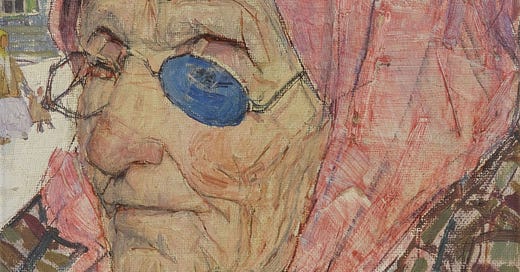



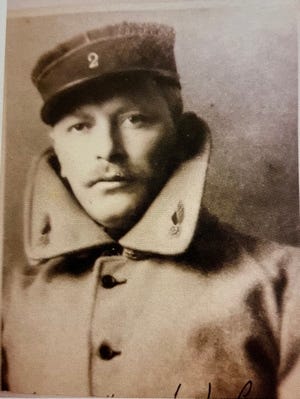


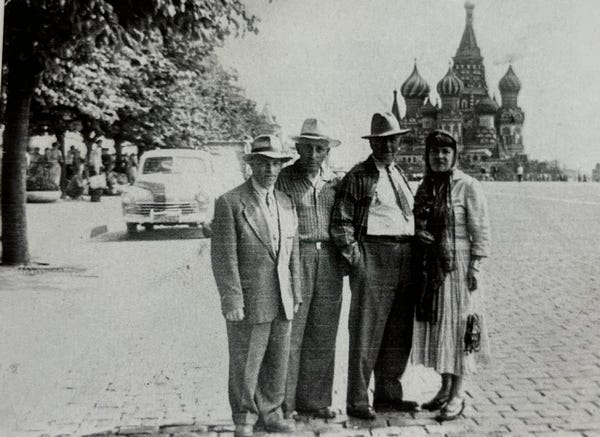

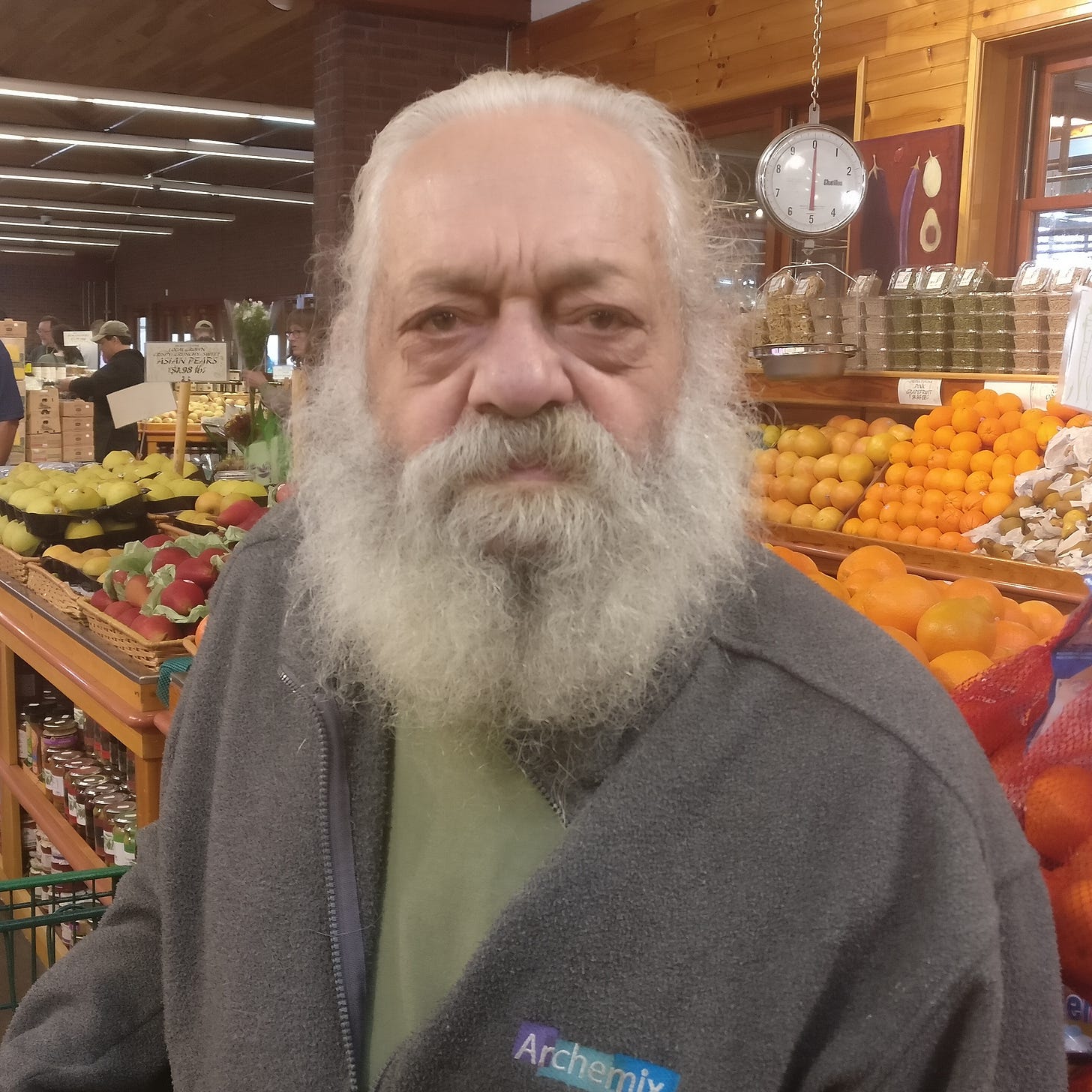
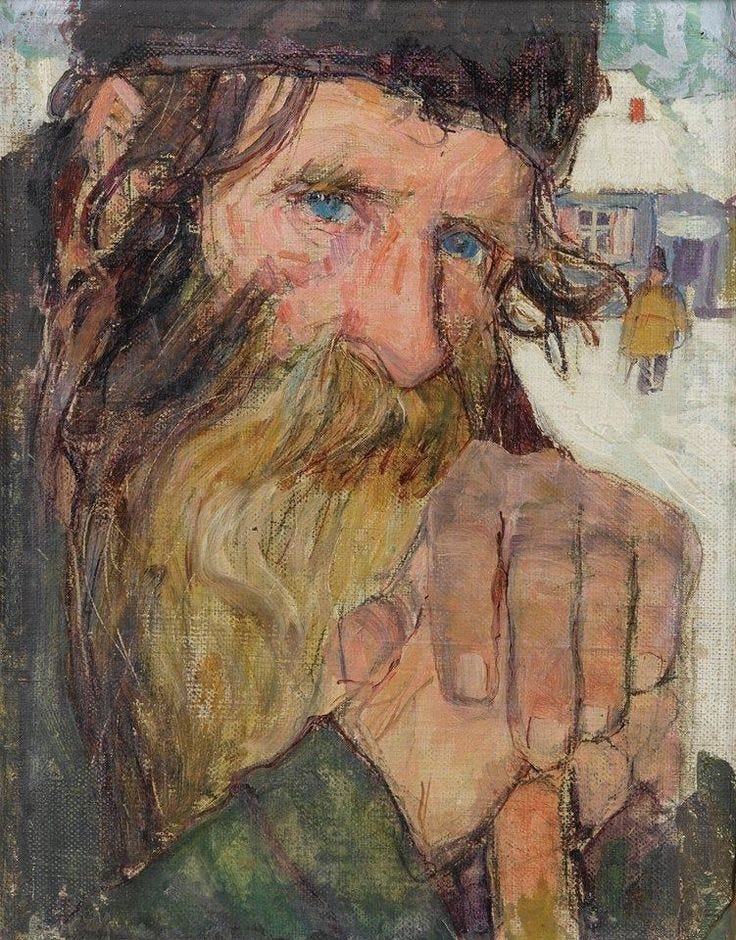
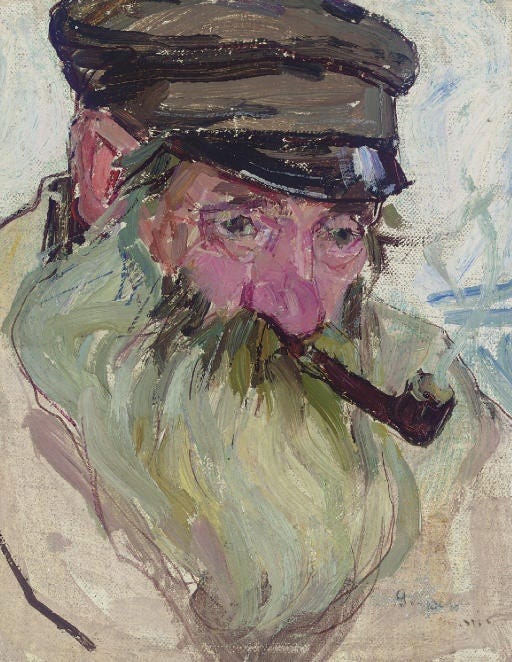
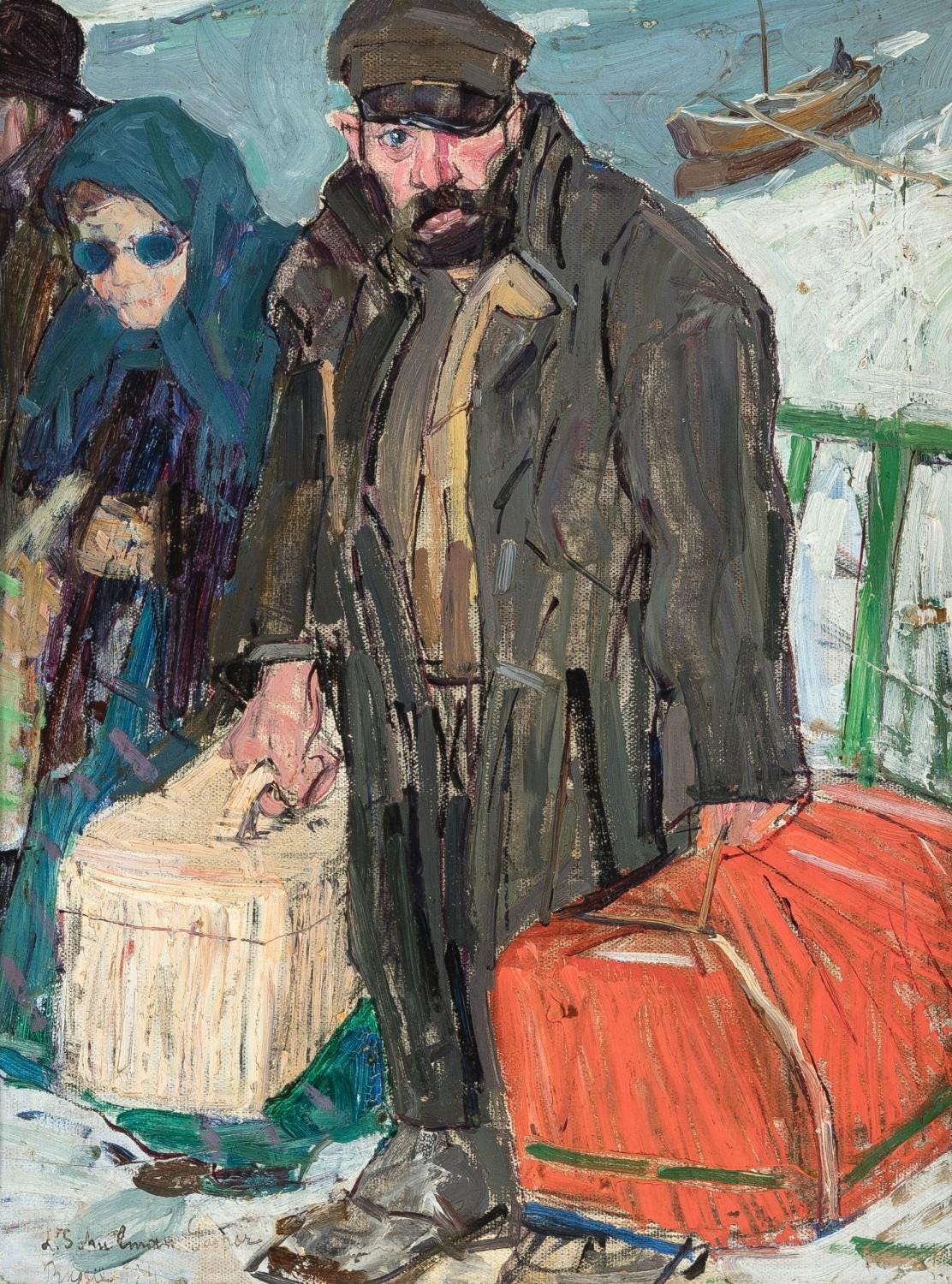



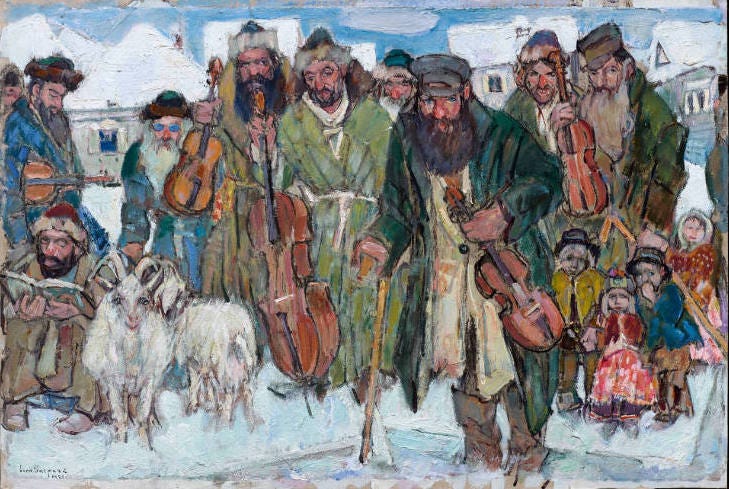


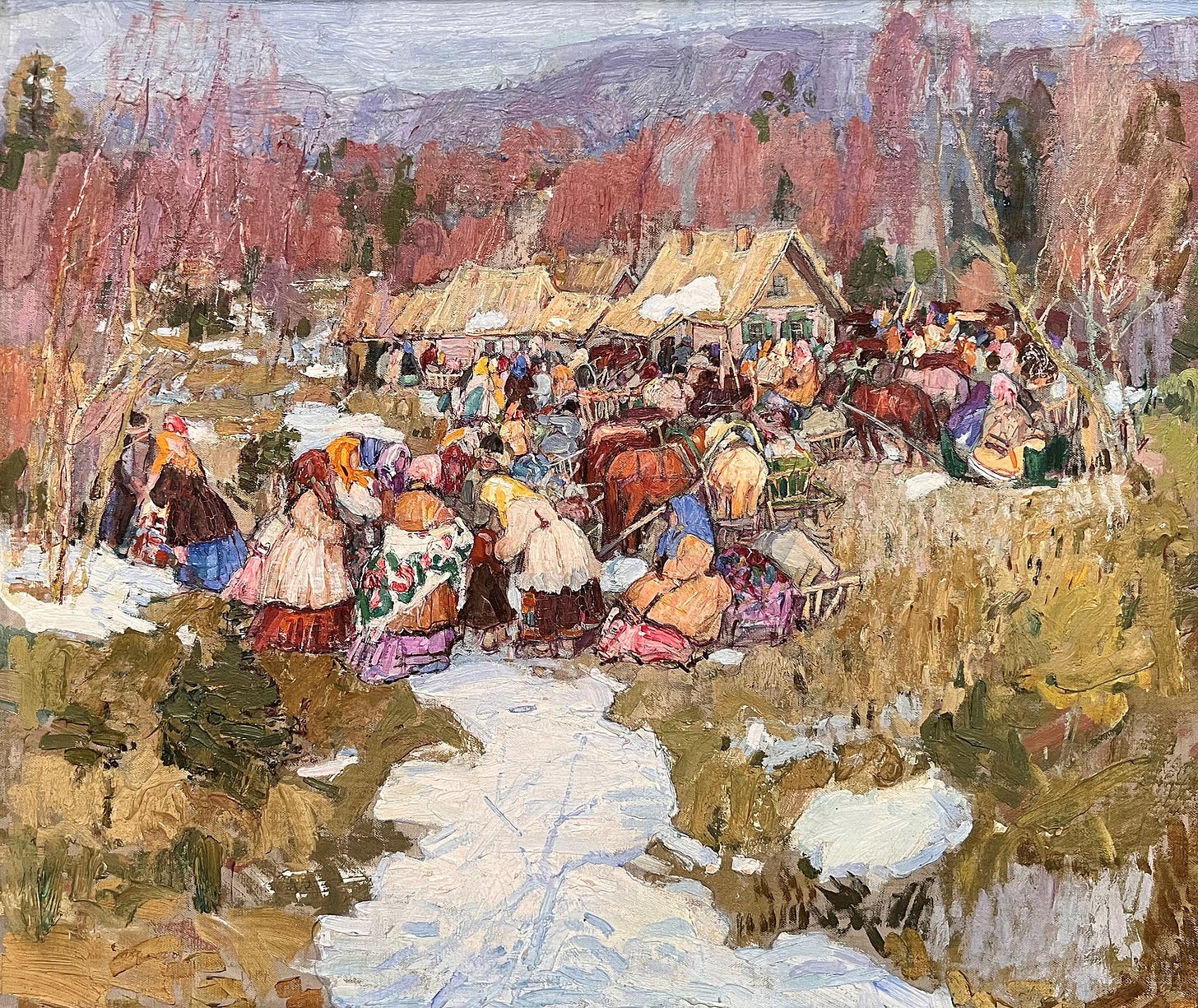
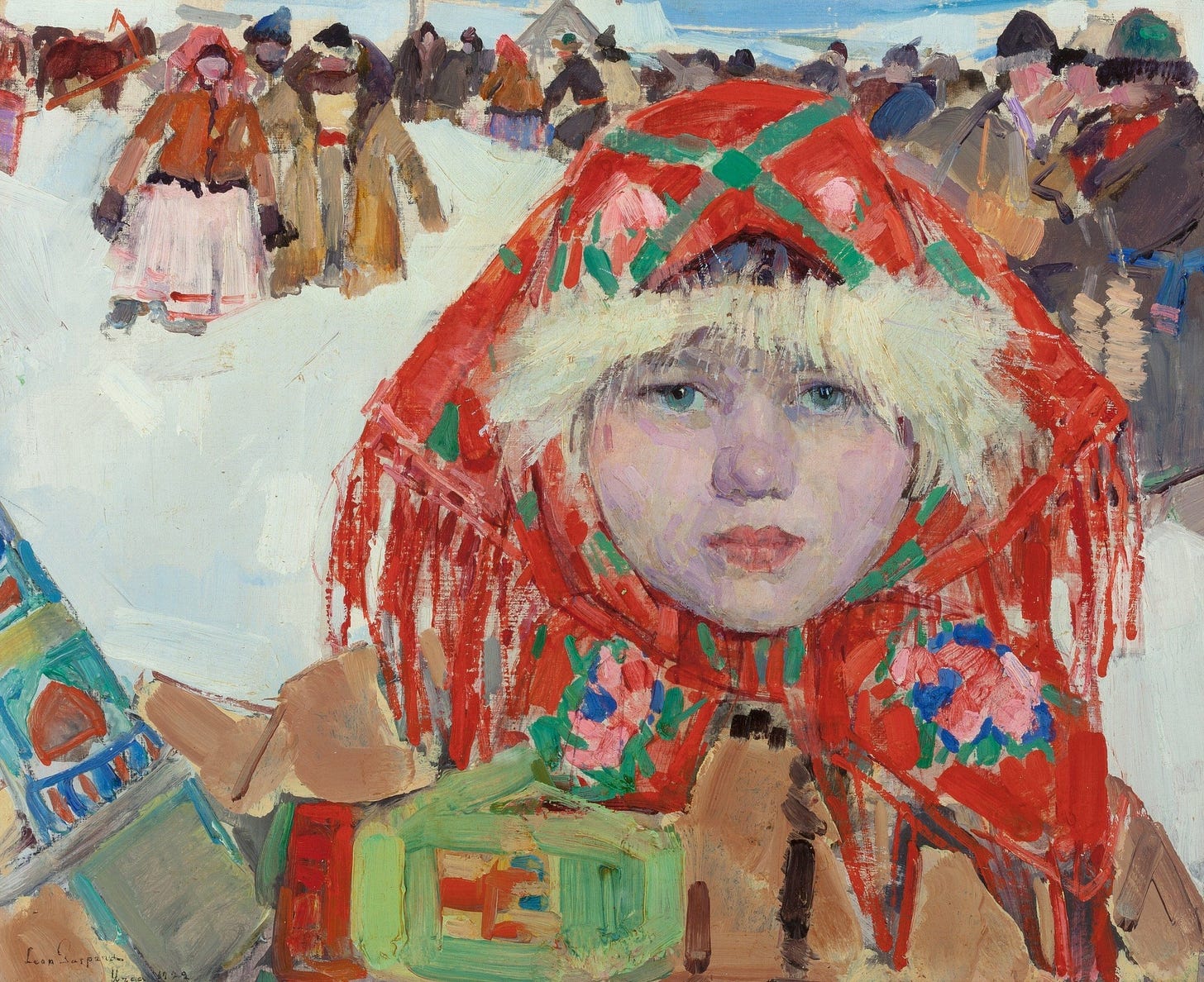




exquisitely beautiful portraits (don't care for his "mother russia" scenes). it is gratifying to learn that he saw success in his lifetime, that his paintings now sell for millions of dollars, and that his life didn’t end in some nameless ditch of the WWI. all in all not too bad at all…